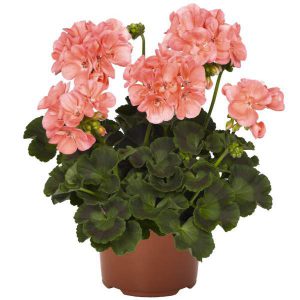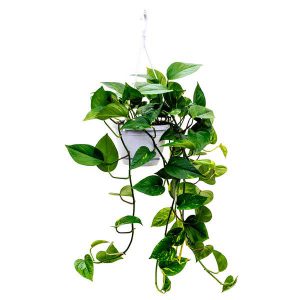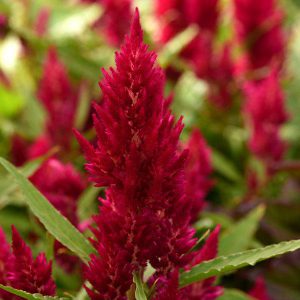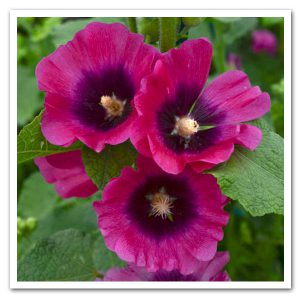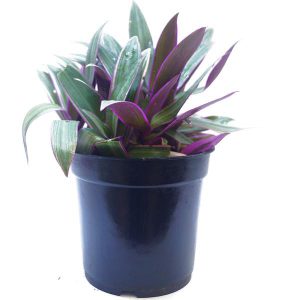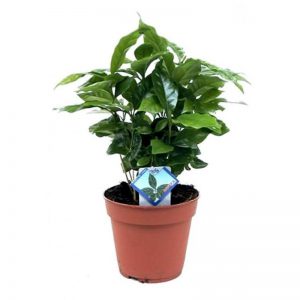geranium
Whether indoors or out, geranium care is pretty basic. In addition to watering, which should be done deeply and once the soil begins to feel dry indoors or at least weekly outdoors (though potted plants may need daily watering in hot weather), fertilizing is usually necessary. Use a water-soluble houseplant fertilizer or a 5-10-5 fertilizer with additional organic matter every four to six weeks throughout their active growing season. Indoor or potted plants may require repotting once they become overgrown, usually noted by wilting between waterings. Regular deadheading of spent blooms will also help encourage additional blooming. When watering outdoor plants, it’s best to avoid overhead irrigation, as this can lead to pests or disease issues. Geranium plants root easily from cuttings and can be propagated in fall for overwintering of outdoor plants. They can also be dug up and brought inside.
AED 10.00Read more
Petunia
Growing petunias can offer long term color in the summer landscape and brighten dreary borders with lovely pastel colors. Proper petunia care is simple and easy. After learning how to plant petunias you can include them in your flower bed and container garden. Four species of petunias include hundreds of cultivars and offer a perfect addition to the home landscape:
AED 2.00Add to cart
gazania rigens
gazania rigens
Grow in sandy to average, well-drained soils in full sun. Tolerates some soil dryness, but prefers consistent moisture. Do not overwater, however. Deadhead spent flowers to encourage additional bloom. Winter hardy to USDA Zones 9-11. Grow as annuals in St. Louis, either in the ground or in containers. Prefers cool summer climates, and flowering may slow down considerably in hot and humid St. Louis summers. If growing from seed, start plants indoors in late winter (6-8 weeks before last frost date) and set plants outside after last frost date. Take basal offsets from favorite plants in late summer to early fall for rooting and subsequent overwintering indoors in pots. Container plants may also be brought inside for winter.
AED 5.00Add to cart
Scindapsus hanging
Native range extends from Northern Australia through Malesia and Indochina into China, Japan and India. The species have become naturalised in tropical and sub-tropical forests worldwide, where it has caused severe ecological damage in some cases. Scindapsus aureus can become a highly invasive species when introduced into tropical countries where it is not native. Having no natural enemies, it completely overgrows the forest floor as well as the trunks of trees, causing severe ecological disruption.
AED 30.00Add to cart
Celosia
Sunlight: Full sun locations allow cockscomb Celosia to grow taller. But cockscomb may grow in only partial sun, so it can happily exist when partially shaded by taller plants.
Water: Celosia loves moist soil. Although the plant can tolerate short periods of drought but it grows much better when soil remains slightly moist. While watering, remember not to overwater plant to avoid leaf spots, stem rot, root rot and other fungal diseases.
AED 3.00Add to cart
Hollyhocks plants
The flowering stalks of the hollyhock, Alcea rosea, are covered in buds from the top all the way down to the rosette of foliage at the base. Once they are fully grown and ready to burst into color, these blooms start at the bottom and slowly work their way up, unfurling a little at a time. As the blooms continue to open, there will typically be several blooms per stalk all opening at once to create beautiful columns of rainbow-worthy color.
AED 45.00Add to cart
Cassia fistula (Golden shower tree)
Young trees can grow asymmetrical with branches often drooping toward the ground. Staking and proper pruning will help develop a well shaped and structured crown.
It has great value in medicine. It is known as aragvadha, meaning “disease killer”. The root is considered a purgative, and self-medication or any use without medical supervision is strongly advised against in Ayurvedic texts. The flesh of the fruit is used as a laxative, while the bark can be used to treat skin infections.
AED 10.00Add to cart
Rhoeo dis colour
Rhoeo, including Rhoeo discolor and Rhoeo spathacea, is a plant of many names. Depending on where you live, you may call this plant moses-in-the-cradle, moses-in-a-basket, boat lily and oyster plant. Whatever you call it, Rhoeo makes an excellent and fast growing ground cover in the garden.
AED 5.00Add to cart
Oncidium Mini Yellow ‘Real Feel’
Oncidium Mini Yellow ‘Real Feel’
The flowering plants (angiosperms), are the most diverse group of land plants. The first flowering plants known to exist are from 160 million years ago. They diversified enormously during the Lower Cretaceous and became widespread around 120 million years ago. It is generally assumed that the function of flowers, from the start, was to involve animals in their reproduction processes.
By so doing plants greatly improved their reproductive efficiency and genetic diversity. Many animals contribute, insects, birds, bats monkey’s etc. interestingly red flowers will be pollinated by animals that can see ‘red’ in the spectrum, (like birds and monkeys). Rarely will they be pollinated by insects which can see ultraviolet, but not red.
AED 25.00Add to cart
carissa gandiflora boxwood beauty
Carissa ‘Boxwood Beauty’ is a compact dense evergreen shrub with green foliage and no thorns on the stems. Has deep green leaves like a large leafed boxwood. OK to prune heavily to shape. Produces fragrant white flowers with 5 petals. Full sun produces best growth results. Excellent for hedging and shaping
AED 10.00Add to cart
Coffee Arabica Plant
Coffea arabica (/əˈræbɪkə/), also known as the Arabian coffee, “coffee shrub of Arabia”, “mountain coffee” or “arabica coffee”, is a species of Coffea. It is believed to be the first species of coffee to be cultivated, and is the dominant cultivar, representing about 60% of global production.[1] Coffee produced from the (less acidic, more bitter, and more highly caffeinated) robusta bean (C. canephora) makes up most of the remaining coffee production. Arabica coffee was first found in Yemen and documented by the 12th century.[2] Coffea arabica is called būna in Arabic.
AED 55.00Add to cart
Gerbera daisy
Gerbera daisies are susceptible to fungal diseases, although older varieties less so. Fungal sprays do not generally prevent crown rot, so correct planting and watering are essential for gerbera daisy care. Make sure you plant them with adequate spacing and in high light areas. A little bit of light shade in high summer is alright, but without full, direct light the plants will get leggy and pale and not produce nearly as many blooms. Water in the morning so leaves can dry out during the day to lessen the risk of rot and fungal diseases. Gerbera daisy care can also be enhanced by using a micro-nutrient liquid fertilizer such as a seaweed or fish emulsion. Keep an eye out for caterpillars and leaf miners too. Spray, if needed, with an organic spray such as pyrethrum or neem oil. Growing gerbera daisies can have some challenges, but it is a wonderful reward when those big, happy flowers bloom.
AED 20.00Add to cart

